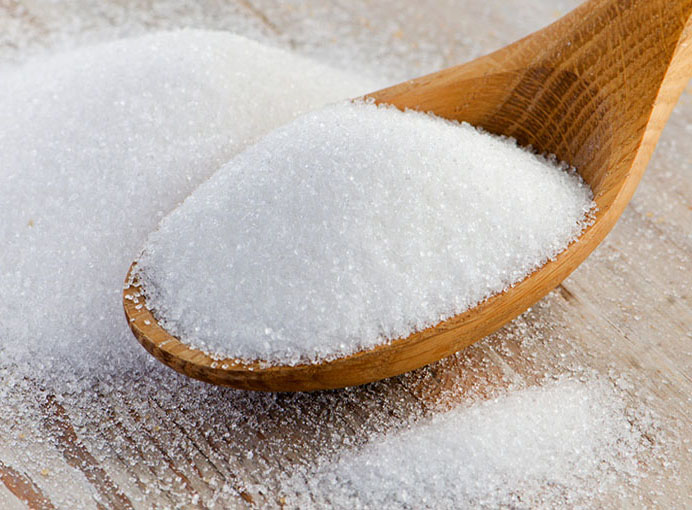On May 30, 2023 the U.S. Food & Drug Association (FDA) updated its webpage Aspartame and Other Sweeteners in Food—and reiterated that the six artificial sweeteners on the FDA’s list are safe for human consumption.
Ironically, just one day earlier researchers from the University of North Carolina published a study on one of the sweeteners—sucralose—that was so alarming the researchers felt the need to insist consumers stop using it immediately.
The researchers found that sucralose actually changed the DNA of users. According to the findings of the study, sucralose had the nasty habit of “causing DNA to break apart,” putting people at higher risk for disease.
Most people know sucralose under the brand name of Splenda, which can be found ubiquitously in restaurants in little yellow packets. It should be noted the Splenda company also markets natural sweeteners, such as stevia and monk fruit, under the Splenda brand.
Study background
Previous work by the same research team established that several fat-soluble compounds form in the gut after ingesting sucralose. One of those “genotoxic” chemicals is called sucralose-6-acetate.
From this starting point researchers put together a series of in vitro experiments exposing human blood cells to sucralose-6-acetate and subsequently monitoring for genotoxicity markers.
Shockingly, researchers found that sucralose-6 acetate was so toxic it effectively broke up DNA in cells that were exposed to the chemical. Since destroyed DNA magnifies the risk of many health conditions in the host, the study authors believe these findings raise serious questions about how the zero-calorie sweetener may contribute to a plethora of health problems.
“Other studies have found that sucralose can adversely affect gut health, so we wanted to see what might be happening there,” said Prof. Susan Schiffman, an adjunct professor in the joint department of biomedical engineering at North Carolina State and the University of North Carolina at Chapel Hill.
Gut chaos
“When we exposed sucralose and sucralose-6-acetate to gut epithelial tissues—the tissue that lines your gut wall—we found that both chemicals cause ‘leaky gut.’ Basically, they make the wall of the gut more permeable. The chemicals damage the ‘tight junctions,’ or interfaces, where cells in the gut wall connect to each other,” Prof Schiffman added.
A leaky gut is problematic, because it means that things that would normally be flushed out of the body in feces are instead leaking out of the gut and being absorbed into the bloodstream. But this is just the tip of the iceberg relative to gut health destruction.
The researchers also ascertained that gut cells exposed to sucralose-6-acetate had increased activity in genes related to oxidative stress, inflammation and carcinogenicity.
“This work raises a host of concerns about the potential health effects associated with sucralose and its metabolites. It’s time to revisit the safety and regulatory status of sucralose, because the evidence is mounting that it carries significant risks. If nothing else, I encourage people to avoid products containing sucralose. It’s something you should not be eating,” Prof. Schiffman concluded.
Toxic overload
To understand just how much risk U.S. consumers are taking, a comparison to the European Food Safety Authority’s (EFSA) recommendations will put things in context:
The EFSA has a threshold of toxicological concern for all genotoxic substances of 0.15 micrograms per person per day. Meanwhile, the new study found that the trace amounts of sucralose-6-acetate in a single, daily sucralose-sweetened drink exceeded that threshold.
And that’s before accounting for the amount of sucralose-6-acetate produced as metabolites after people consume sucralose.
The study was published May 29 in the Journal of Toxicology and Environmental Health Part B.
Sucralose origins
Sucralose was discovered in 1976 by scientists from Tate & Lyle, working with researchers Leslie Hough and Shashikant Phadnis at Queen Elizabeth College (now part of King’s College London).
While researching novel uses of sucrose and its synthetic derivatives, Phadnis was told to “test” a chlorinated sugar compound.
Phadnis thought Hough asked him to “taste” it, so he did. He found the compound to be exceptionally sweet. Tate & Lyle patented the substance in 1976, and it was first approved for use as a sweetener in Canada in 1991.
Subsequent approvals came in Australia in 1993, in New Zealand in 1996, in the United States in 1998, and in the European Union in 2004. By 2008, it had been approved in over 80 countries, including Mexico, Brazil, China, India, and Japan.
FDA assurances
The FDA website, ironically updated the day after the shocking study, assures consumers sucralose is safe. It describes sucralose as 600 times sweeter than table sugar, and safe to use in “baked goods, beverages, chewing gum, gelatins, and frozen dairy desserts.”
To determine the safety of sucralose, the FDA claims it “reviewed more than 110 studies” to identify possible toxic effects. The studies ostensibly included research on “the reproductive and nervous systems, carcinogenicity, and metabolism.”
Clearly the selection of which studies to use is a critical aspect in determining sucralose’s safety. Numerous other studies—conducted long before the current DNA study—have linked sucralose to cancer, diabetes and Crohn’s Disease. It has been shown to kill healthy bacteria in the gut, which leads to numerous other digestive issues.
Perhaps the most astonishing studies on sucralose are those that link it to weight gain—the very issue it is supposed to prevent.
If you’ve used a sucralose-containing product recently, consider restoring your gut health with Flora Blitz 100 from Optimal Health Systems. Click the banner ad on this page to learn more.
Other Optimal Health Systems products that provide a probiotic blend include:
• Optimal Flora Plus
• 21-Day Blitz Challenge Package
• Exposure Protection Pak
• Natural Z Pak
• Optimal Defense
– – –
Sources: Journal of Toxicology and Environmental Health Part B, North Carolina State University, Wikipedia/sucralose.


